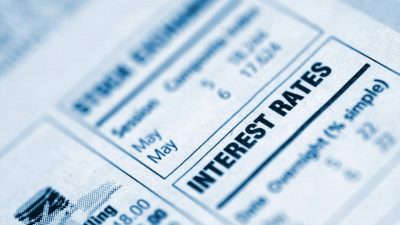The buy-to-let sector has enjoyed a long period of stunning returns. Since the mid-1990s, UK house prices have surged. Despite a dip during the financial crisis, they’ve generated high levels of capital growth for investors. Rents have also increased, and this has provided high total returns for a range of individuals.
Now, though, the sector faces an uncertain outlook. The potential for higher interest rates, affordability issues and regulatory changes mean that the industry may have lost its appeal. In contrast, another investment could continue to deliver high returns over the long run, in my opinion.
Challenging future
Buy-to-let may become a less obvious means of generating a high return on investment in future due to the prospect of rising interest rates. While Brexit means there could be uncertainty ahead, interest rates are expected to rise in the medium term. Certainly, it may take a number of years before they return to ‘normal’ levels by historical standards. But a higher interest rate may put pressure on the cash flow of a wide range of buy-to-let investors, since mortgage repayment costs are likely to rise.
There are also continued concerns about the affordability of housing across the UK. Last year, the house-price-to-income ratio reached its highest level on record. If interest rates rise, this could be sufficient to hurt demand for housing, which may mean that house price growth slows. Alongside this, political risk means that the Help to Buy scheme’s future remains uncertain, with the policy having provided a significant catalyst for the industry in recent years.
Furthermore, tax changes to buy-to-let mean that the net return on investment is now significantly lower than it was in previous years. Tax changes, such as additional stamp duty and a lack of mortgage interest deductibility, could mean that the returns on buy-to-let suffer significantly over the medium term.
Growth potential
While buy-to-let may experience a challenging period, the stock market continues to generate higher highs. The FTSE 250 is perhaps the most representative index for the UK economy, since the majority of its income is generated domestically. In contrast, the FTSE 100’s income is mostly generated internationally.
The FTSE 250 has a strong track record of growth. It has always been able to recover from the various downturns which it has experienced. Although buying while it’s at a low price level is clearly a better move than buying at the top of a bull market, the reality is that investors would be likely to have generated high returns even when buying at a time when a margin of safety was somewhat lacking.
It’s the ability of the index to continue to make higher highs over the long run that’s perhaps its most appealing feature. However, it also offers favourable tax opportunities compared to buy-to-let, being possible to avoid capital gains and dividend tax within an ISA or SIPP. As such, it could be a better place to invest for the long term.






